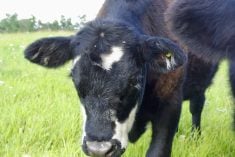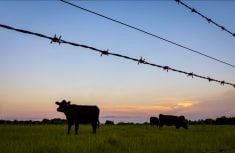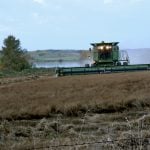Foot-and-mouth disease (FMD) is a highly contagious, acute, viral disease affecting cloven-hooved animals including pigs, cattle, sheep and goats. Controlling FMD in countries previously free of the disease and wishing to re-establish freedom is a sophisticated process requiring technical expertise, persistence and tough decisions.
The disease is characterized by formation of vesicles and erosions inside the mouth and on the nose, teats and at the horn/hoof junction (coronary band) of the feet. Although debilitating, mortality is low in adult animals, but death can be common in young piglets, calves and lambs. FMD virus persists in the environment. The virus is inactivated at low and high pHs, making acid and alkali disinfectants particularly effective. Like most RNA viruses, FMD mutates spontaneously, creating differences within strains that differ immunologically. Serotype differences can be established through complex diagnostic procedures. Vaccines, if used, are formulated using strain and serotype cocktails. Globally, FMD virus is roughly grouped into seven endemic pools, each requiring tailored diagnostics and vaccine strategies.
Read Also

Are you a competitive supplier of weaned beef calves?
Beef farmers and ranchers need to strategically manage costs to achieve and maintain profitability.
There are two primary routes of FMD infection: inhalation and ingestion. Cattle are easily infected by the respiratory route, while pigs require 80 times the amount of virus to initiate airborne infection. Pigs require relatively lower doses of FMD virus to be infected through ingestion, which is why garbage feeding in swine is a high-risk practice if swill is not properly cooked. The incubation period for FMD is normally considered to be 14 days, but clinical signs often appear five to six days after exposure.
Virus excretion differs significantly between ruminants and swine. Large quantities of virus are released from air exhaled by pigs. An infected pig can produce up to 400 million infectious doses per day (3,000 times the doses excreted by ruminants). Pigs are therefore important amplifiers of FMD. Intensively reared pigs produce plumes of virus that can be transmitted for significant distances. In ruminants, but not in pigs, FMD virus can persist for up to 28 days in the oropharynx (back of the throat), with 50 per cent of infected ruminants becoming persistent carriers (three to five years) regardless of their immune status. A country cannot be considered free if carrier animals are present. All infected and potentially infected animals must be culled.
The economic impact of an FMD outbreak in Canada has been projected between $8.3 and $46 billion (2002). In 2020 dollars, estimates swell to between $19.4 and $65.2 billion. Canada’s borders would immediately close to trade in animal and animal products for up to two years (estimates).
FMD is one of the most contagious diseases known. Considering the large and highly mobile nature of Canada’s livestock sector, trained outbreak investigation teams become absolutely essential. Monitoring the progress of control efforts is critically important. When control efforts fall short of their intended mark, it’s necessary to carefully examine control elements such as breaches in on-farm biosecurity, improper movement controls, or lack of industry awareness.
Stopping the spread of FMD becomes a function of stringent control measures that industry buys into. In time, use of appropriate FMD vaccines combined with careful post-outbreak management of vaccination will become an essential element of FMD control. Public and social pressure decrying the “slash and burn” approach to disease control will force regulatory agencies to re-think their reluctance to use FMD vaccines. Although the majority of affected animals recover, there are important sequelae to consider such as chronic foot problems, mastitis and long-term carrier animals.
Serious animal welfare challenges range beyond clinical considerations. Movement restrictions and border closures create overstocked swine barns and feed yards. With markets closed, swine facilities become overcrowded within several days. Feedlots very quickly have an overabundance of fats with no place to go. Both represent serious animal welfare issues.
The most likely route of FMD into Canada is the illegal importation of infected animals or contaminated animal products. Canada deals with a large number of visitors from the Middle East, Africa and Asia where FMD is endemic. Forty-nine per cent of the 4.6 million travellers arriving in Canada in 2018 originated in Central and East Asia, 22 per cent from West Eurasia and the Middle East, and 19 per cent from South Asia. Tonnes of meat products are confiscated at ports of entry every year from travellers on arrival, much of it through regulatory ignorance, yet bioterrorist intent can never be ruled out.
Modern outbreak investigations encompass: rapid diagnoses, lab confirmation, virus characterization, aging of FMD lesions as an aid to estimating when the virus was introduced and when it left, and interview techniques to identify opportunities for FMD virus to arrive on a premise and where it might have gone.
Concurrent emergencies such as the COVID-19 pandemic, the ongoing threat of African swine fever, or weather disasters need to be factored into existing disease control strategies. The reality of having to deal with other human and animal emergencies in the face of FMD is an indomitable feature of disease control in the 21st century. The lack of public trust easily slides into the position of “number-one” enemy.
The World Organization for Animal Health (OIE) is recognized as the standard-setting organization by the World Trade Organization (WTO). The OIE develops guidelines that member countries use to protect themselves from the introduction of diseases and pathogens. The Terrestrial Animal Health Code provides a modicum of conformity that countries use to negate unjustified sanitary measures that often become unrealistic trade barriers.
From the outset of an outbreak, the desired outcome is to re-establish FMD-freedom without vaccination as quickly as possible. In Canada, Canadian Food Inspection Agency (CFIA) plays the lead role along with provincial and industry partnerships. It’s generally recognized that national and local machinery is quickly overwhelmed.
Emergency management of a highly infectious disease like FMD is vital. Sustainability and profitability of our agriculture sector depends on it.

















